Project Financial Management: A Step-by-Step Guide for Teams and Agencies
Discover how to manage project finances with confidence. Our step-by-step guide covers budgeting, cost tracking, forecasting, and reporting for teams and client-based businesses.

We have all experienced that.
You attend a large meeting, and those hard-to-hear words are said: The project cost tracking shows it is 40 percent over what we estimated.
People stare, they start to point to what might cause such a project profitability analysis, and everyone thinks they know why it went south.
However, this comes with a painful reality, and it is true that most of the time, the failure of projects is not due to bad ideas or poor workmanship.
They are not successful because they are badly managed in terms of money.
You might produce the coolest thing just in time, but given that you have exhausted your finances, people will not consider your intelligent endeavor.
Bad results will be a reminder of the money mess.
It is sometimes life-changing. Your name, your future opportunities, and staying employed may all be at stake based on your project financial management.

In this project financial management guide, we shall turn that story around.
We will unravel how to manage project finances and improve the situation with action steps and tools that ideally suit budget tracking for projects, so that your business achieves objectives and fulfills time and cost management goals.
We are going to discuss powerful planning, live tracking, intelligent forecasting, and dealing with risk.
At the end of the day, you will be in a position to discuss, talk money, and maintain your projects in good financial shape.

The Bottom Line: Financial management is critical to keeping projects on track and profitable. Poor visibility into costs leads to scope creep and missed margins. Whether you're managing short-term client work or managing epic projects, mastering project financial management ensures sustainable business growth and stakeholder satisfaction.
What Is Project Financial Management?
Project financial management is the process of planning, tracking, and controlling a project's financial performance throughout its entire lifecycle.
This discipline encompasses all financial aspects from initial budget creation to final profitability analysis.
The core components of project financial management include:
- Comprehensive budgeting
- Accurate forecasting
- Meticulous tracking of actual expenditures
- Detailed profitability analysis.
💡Use a single dashboard that combines real-time cost tracking, time sheets, and resource schedules so you can instantly spot overruns and re-allocate budget or staff before quality or deadlines slip. Feed the same data into rolling forecasts each week to keep every financial decision aligned with both the project’s budget and delivery targets.
Glossary of Key Terms
BAC (Budget at Completion): This is the amount of budget that is approved of the project.
PV (Planned Value): Expected money used to do what is planned to be accomplished during a certain period of time
EV (Earned Value): Budgetary amount of the work that a certain amount is completed on a specific date
AC (Actual Cost): The actual cost that is spent on work that is done (to a specified date.
CPI (Cost Performance Index): A cost efficiency measure (EV ÷ AC)
SPI (Schedule Performance Index): Schedule efficiency (EV ÷ PV)
EAC (Estimate at Completion): The amount predicted to be the total cost of the project upon its completion
ETC (Estimate to Complete): The estimated cost to complete the remaining work
VAC (Variance at Completion): The difference between BAC and EAC
Why It Matters
Effective project financial management is the foundation of two important domains:
- business operations
- client satisfaction.
Without proper financial controls, projects frequently exceed budgets. It results in reduced profitability or outright losses.
Thus, effective cost management is crucial for project management as it directly impacts the success and profitability of a project.
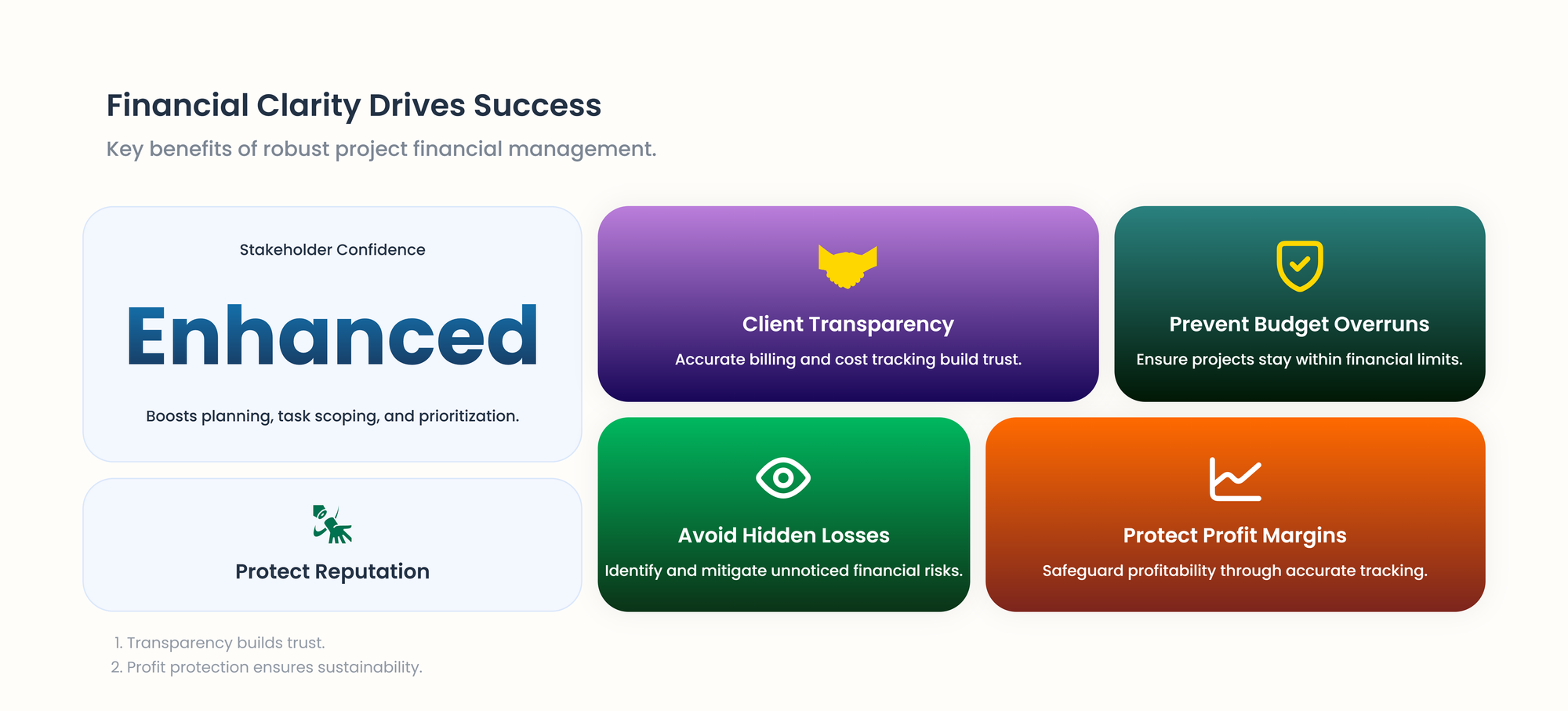
Furthermore, proper financial management ensures that client projects are delivered profitably while maintaining competitive pricing. It boosts transparency for billing and invoicing for client work, creating trust and long-term business relationships.
Firms that carry out extensive project financial management systems usually improve in project delivery schedules, scores on customer satisfaction, and overall business profitability.
This capability to predict financial results gives us an opportunity to make corrections in advance, not to react to a crisis.
Step 1: Set a Project Budget
- Project Scope Definition
Identify all the deliverables of the project. Break them down into tasks that are specific and measurable. Prepare a proper work breakdown structure (WBS) to prevent scope creep.
Uncontrolled scope creep is the fastest way to blow your budget. Every scope change has a cost impact. Make sure stakeholders understand this connection: "Scope discipline is budget discipline."
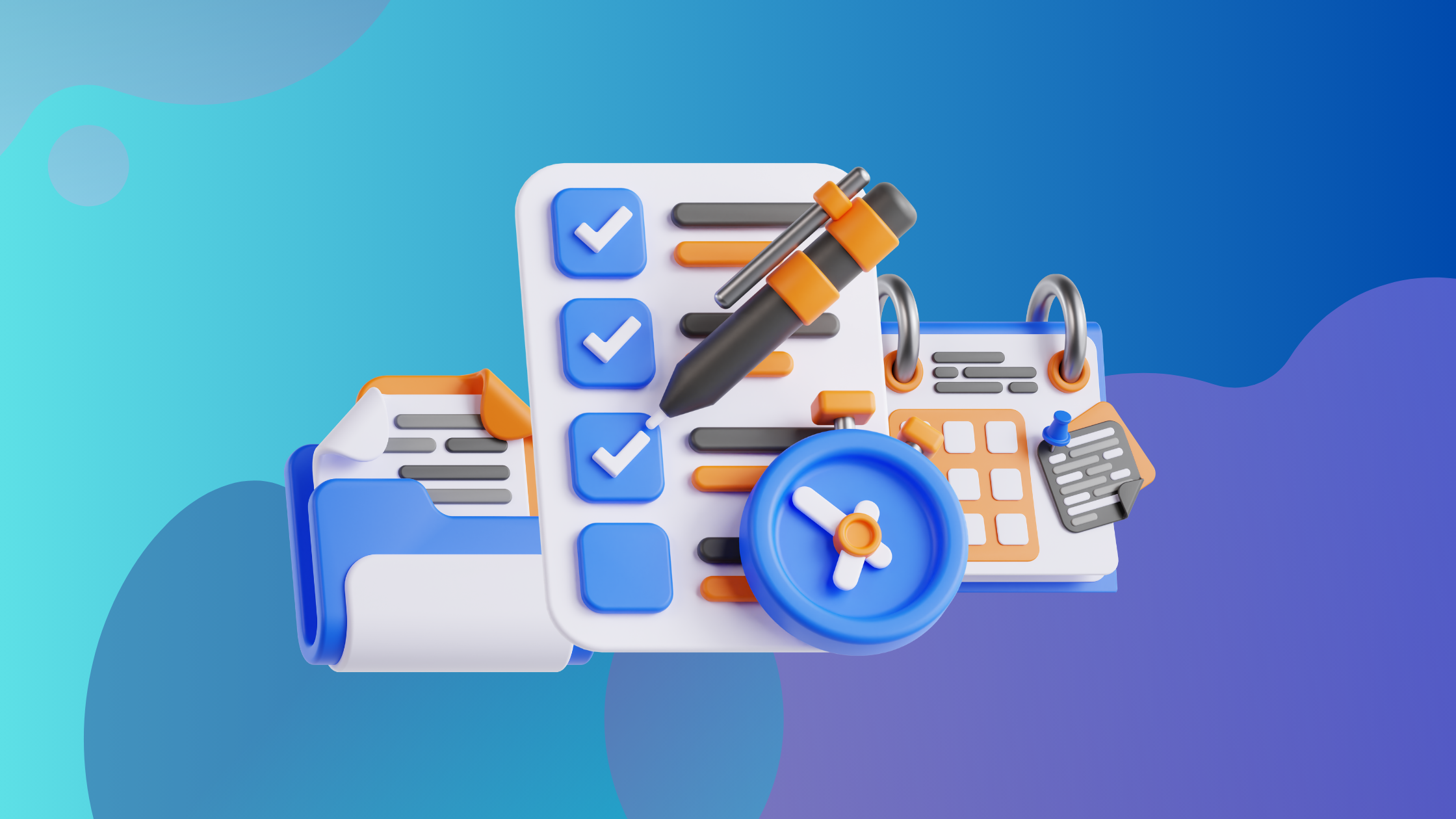
- Estimate Costs
Regarding every task, estimate:
Hours needed
Rates per hour for the team members
Required materials/tools
Add 15-25 percent on overhead (admin, office expenses, software licenses)
- Add Contingency Buffer
Provide allowance for project risk:
10 per cent of routine projects
15 percent moderate complexity
High-risk or new territory projects, 20- 25%
- Historical Data should be used
Record real and estimated expenditure through a simple spreadsheet. Note patterns: Do you have a tendency to underestimate testing? Design revisions? Apply these estimates in later estimates.
- Select Budget Tracking Tools
Entry level: Excel /Google Sheets using budget templates
Advanced: TMetric, Asana (time tracking, along with budget tracking)
Quick Checklist:
Well-defined project scope
All the elements of the cost estimate
A fine buffer added
Past data considered
Selection and installation of the tracking tools
Step 2: Allocate Resources and Rate Setting
- Assign Team Roles
Rank the members of the team by certain functions
Distinguish billable and non-billable things clearly
Write the name of the person performing a task to eliminate confusion
- Set Rate Structures
Develop tiered rates:
Junior: $50-75/hour
Mid-level: $75-100/hour
Senior: $100-150/hour
Specialist: $125-200/hour
Change the rates, taking into account your market and industry.
- Determine client as opposed to internal rates.
Internal rates: True cost + profits + overhead
Client rates: Profit margin + market competitive
Track to be able to do proper profitability analysis
- Automatic Calculation of Cost
Link your rates to time tracking programs:
Automate yearly costs computations (hours, rates)
Facilitate real-time budget tracking
Minimize errors caused by manual calculations
- Monitor non-labor costs
Separate budget for:
Software licenses
Hardware and software
Travel expenses
Subcontractor fees
Office supplies
Quick Checklist:
Rates and roles of a team are established
The rate structure is designed internally/client rate structure is developed
Time tracking system setup
Costs that are non-labor costs
Automated costing made this possible.
Step 3: Track Time and Expenses in Real-Time
- Track time and expenses every day
Make the team members record their time on an everyday basis, to achieve accuracy in weekly and monthly reports
You can try simple time tracking software or Excel spreadsheets
Install the auto-reminders at the end of the working day
- Record out-of-scope tasks
Work on additional requests must be categorized separately
When the project scope changes, document it immediately because it reflects on the budget
When tracking extra, insert the description of work done, the amount of time, and the person who requested it
This data will be useful for billing the clients and project evaluation in the future
- Select Dedicated Software
Recommended tools:
TMetric - Automatically compares time to budgets and provides real-time budget usage
One should seek the following properties:
Automatic timekeeping
Budget warnings are imminent due to limits
Project management platform integrations
- Monitor All the Project Costs
In addition to labor cost, keep track:
Subscriptions as well as licenses to software
Equipment rentals
Travels and stay
Contractors, services/tools/third-party services
Materials and supplies
- Install Auto Notifications
Make budget warnings of 75 percent and 90 percent consumption
Status reports on the budget are provided to project managers every week
Stakeholder monthly expense summaries
Quick Checklist:
Check for expense and time logging daily in your operation
Track changes and extra work
Select the budget tracking software
Set all the expense categories
Automatic warnings must be triggered
Step 4: Monitor Budget vs. Actual
- Install Real-time Tracking
Develop dashboards displaying:
Weekly/monthly budget burn rate
Unused budgetary capacity
The estimated costs for the project to complete
Hours on actual expenditure and estimated hours by task
- Configure Alert Systems
Set automatic alerts at:
75% budget used - Yellow warning
90% budget used - Red alert
100% budget used - Critical alert
- Examine Spending Habits
Track typologies of overruns (scope creep, underestimated complexity, or resource availability issues). Write down the trends to make better predictions in the future.
- Allow Midstream Changes
Utilize tracking data to:
Reallocate time to tasks
Refocus on the main project goals
Consider negotiating a scope change with customers
Develop flexibility for smooth changes
- Create Appropriate Reports
For Stakeholders: High-level summaries with key metrics and status
For Project Managers: Detailed breakdowns by task, resource, and timeline
Quick Checklist:
Real-time dashboard installation
Active alert thresholds set
Periodical budget review has been set at weekly
Patterns of overrun recorded
Stakeholder report automation
Step 5: Forecast Financial Outcomes
Keep the past data and performance patterns so that the accuracy of the forecast can improve over time.
Examine implemented projects to clarify the frequent mistakes made when forecasting and adjusting models. Such an iterative improvement method increases the accuracy of financial forecasts of future projects.
Profitability analysis of projects must be done in terms of both direct costs and opportunity costs, efficiency of the resources utilized, and long-run client value.
Thorough examination gives information on the viability of the project and assists in the prioritization of further business expansion.
- Calculate Key Financial Metrics
Estimate at Completion (EAC) – Take the formula that suits your case:
EAC = AC + (BAC - EV): Use if future work will proceed as originally planned
EAC = BAC ÷ CPI: Use if current cost trends will continue
Estimate to Complete (ETC)
ETC = EAC - AC (how much more you need to spend)
Variance at Completion (VAC)
VAC = BAC - EAC (whether you'll finish over or under budget)
- Update Forecasts Regularly
High-Risk Projects: Updates Each Week
Changes in the market can impact goals, or tech issues can change costs.
Checking every week lets us fix paths quick and talk with all involved.
For example: Starting new tech projects, growing into new markets, or fast-paced tasks.
Low-Risk Projects: Updates Each Month
Steady projects with predictable costs and timelines
Not many big changes that can shake up the money plan.
Updating once a month is good enough to keep track, without too much control.
For example: Routine maintenance projects, established process improvements, or projects with proven methodologies.
Always use fresh data to tweak guesses.
- Check if Projects Make Money
Think about:
Costs right now against what we make
How well we use what we have
Value from long-term clients
What we miss out on
- Prepare Reports
Pay attention to:
Budget vs. actual spending
EAC and VAC
CPI and SPI
Major variances and causes
Corrective actions planned
- Tailor Reports by Audience
Team: Operational details
Sponsor: Strategic insights
Finance: Compliance information
- Use Visualizations
Burn-down charts: Show actual vs. planned spending
S-curves: Display performance trends at a glance
Variance charts: Highlight deviations from budget
- Choose Forecasting Tools
Basic: Excel for custom modeling
Advanced: TMetric Reports for automated analysis
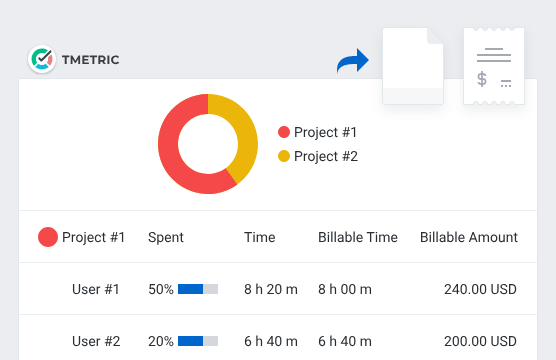
Complex: Specialized forecasting software that integrates with your project management system
Quick Checklist:
EAC is found in a proper formula
Timely updates of the forecasts
Adapted financial reports to suit different consumers
Key metric visual dashboards
Existing systems using combined forecasting tools.
Step 6: Invoice and Report
- Make Detailed Invoices
Construct accurate invoices based on tracked-time data that contain:
The number of hours worked by the team member
Tasks completed
Hourly rates
Receipts of expenses and descriptions
- Make Itemized Billing
Cost breakdown:
Designer (8 hours) - Developer (12hours)
Task group (Research, Design, Development, Testing)
Time (Week 1, Week 2, etc.)
- Install Frequent Financial Reports
Inform the stakeholders in monthly reports, including:
Current expenditure vs. actual expenditure
Leftover budget projection
Status of the profitability of projects
Future milestone expenditures
- Accounting System Integration
Export invoice information to QuickBooks or Xero, or other ERP systems
Automate data transfer to eliminate manual entry errors
Alignment of the project costs to the company's finances at large
- Bill Strategically, When You Can
Short schemes: Bill at completion
Long projects: Bill at 30-day intervals/ or major milestones
Retainer work: Be billed monthly in advance
Make payment terms (Net 15), and enforce them regularly
Quick Checklist:
Time tracking data is full and correct
The form of the invoice provides a list of breakdown
Cohort reporting schedule put in place
Integration of accounting systems installed
Ways of payment and follow-up were determined
Common Mistakes to Avoid
During your financial management experience in the project, be keen to avoid the following trappings:
- Not using the WBS to budget: Your budget ought to follow your work breakdown structure
- Underestimating contingency: It is not about hope; plan for worst cases
- Not keeping on top of actuals: Tracking actuals weekly means no surprises at the end of the month
- Ignoring earned value management: EVM is the most effective means to combine the scope, time, and cost execution performance
- Overlooking financial risks: Forecast financial risks and develop a plan to address them in every project
- Inadequate formal change control: Informal changes are budget killers
Best Practices for Success
The key part of financial project management is regular time tracking.
Put set rules on time entry and make sure that the team members know the implications of precise time accounting. Training and reinforcement of high standards on a regular basis will incorporate high standards.
Institute periodic review of budget status (weekly to determine any problems to be fixed early to avoid further delays or losses. Such reviews ought to involve discussion of the utilisation of the budgets, update of forecasts, and discovery of risks as well as opportunities.
The reviews make regular and establish a sense of accountability, as well as keep financial performance/track on your mind all the time.
Carry out post-project financial reviews to find what can be learnt and how it can be done better.
The analysis of the post-project must look into the accuracy of estimations, the effectiveness of the budget, and financial performance in general.
This study can serve as an important contribution to future project planning and learning in the organization.
Where it is possible to automate processes and tasks, it lowers manual workload and increases accuracy. Automate the triggering of invoices, reports generation, weekly tracking of time, and budget notifications.
Automation helps in saving time to do strategic analysis and decision-making processes, and also minimizes the risk of human error.
Keep a clear record of all expenditure decisions, scope adjustments, and budgetary changes. Such documentation would be helpful in future project development and safeguard against arguments or disagreements.
Documentation is critical to organizational learning and improvement.
Cost Management Top Tips
Breaking Costs Down by Activity:
Good budgets start by listing each part of your project. It's like setting up a big dinner – you don't just guess the total cost. You think about the cost of each dish, drinks, and decor one by one.
For a tech project, this could mean figuring out costs for planning, designing, making, testing, setting up, and teaching. Each part gets a price based on what you need for it.
Planning Your Resources:
Your resources are in several groups.
Work costs: Your team’s pay (how much they make per hour and how many hours), outside help
Tools and stuff: Computers, program fees, office goods
Extra costs: Travel, more training, office space, power
Backup fund: For when things don't go as planned
Why Splitting Costs Matters:
Knowing the types of costs - direct or indirect, set or changing - matters more than just in books. Costs like wages are easy to keep track of. Costs like rent are less easy to change, but still must be watched. Set costs don’t change; changing costs do, based on project size.
Merging Your Work Plan:
Here's a key rule: No clear work plan, no good budget. Your work plan isn’t just a nice chart – it supports your budget needs. Each part of the plan ties to a budget part. This link means you use money wisely, and not just on unclear parts of the job.
Tools and Technology Solutions
Modern project financial management relies on integrated software solutions because they combine time tracking, expense management, and financial reporting.
TMetric: All-in-One Solution
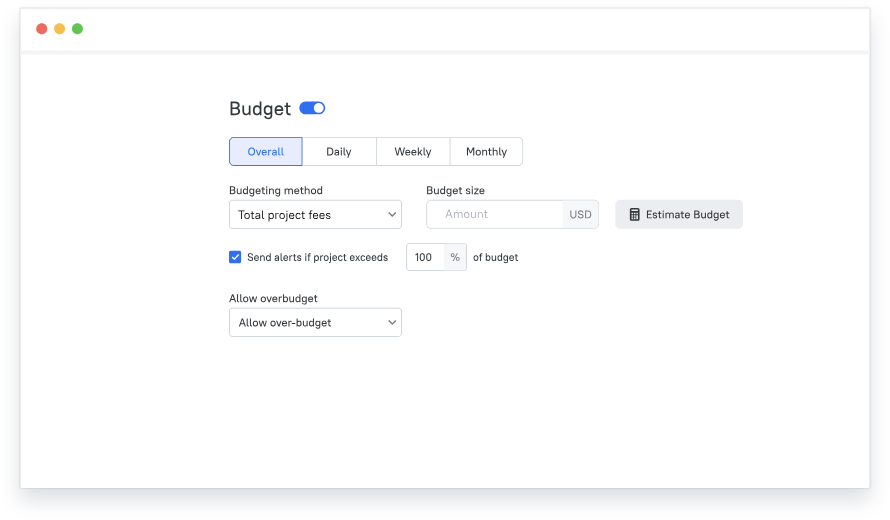
Key Features:
Time to cost conversion: Converts logged-in time into labor costs automatically
On-the-fly budget monitoring: View the expenditure against the budget in real time
Financial reporting: Actual vs. planned cost comparison
Client billing: Create client bills directly out of time entries
Team access: Distant time and expense inscription
Integrations: Works in integration with JIRA, Asana, QuickBooks
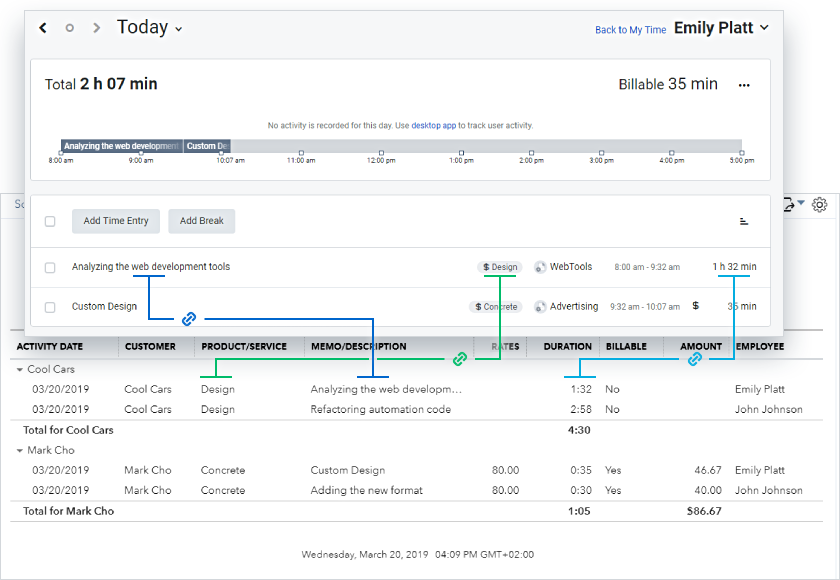
Ideal for teams that require exhaustive time recording and financial reporting.
More Tools to Consider
Project Management Platforms
Jira, Asana, Monday.com – Simple financial tracking and project management
Best suited to teams that will utilise these platforms
Enterprise Solutions
Oracle Primavera, Microsoft Project – Extended financial systems
Best suited to handle big, complex projects that have massive budgets
Simple Solutions
Excel/Google Sheets (custom templates that include formulas)
Most appropriate for a limited budget. Despite their basic functionality, they give complete control of the implementation.
Functional Requirements Checklist
In picking a tool, make sure it features:
Setting up the budget and forecasting
On-the-spot cost control
Financial reports tailored behind the computer
Invoice generation
Leveraging current tools (integration with existing tools)
Remote team accessibility on a mobile device
Quick Selection Map🗺️
Small group, straightforward work: Excel/Google Sheets
Increasing team, billing of clients: TMetric
Enterprise solutions: Complex projects, large organizations
Already using project management tools: Check their financial features first
Final Thoughts
In essence, project financial management is not only an avoidance of overruns, although it is important too.
It is all about value maximization, strategic achievement, and the acquisition of a reputation in delivering projects.
Once you learn these skills, you will be more than just a project manager but a business associate whom the executives and those in the finance department can relate to.
These principles that we have discussed (strong planning, careful monitoring, positive control, proper forecasting, and intelligent risk management) are all inseparable.
Learn to use each of them separately, but more importantly, learn to combine them in an encompassing system.
Keep in mind that any given project gives you a chance to prove your financial prowess.
You now have fully equipped tools such as TMetric to track projects and approaches explained in this guide, so that you can be confident when delivering projects that are operational and profitable.
They are the practices for your next project. Your team, your stakeholders, and your career will reward you.



